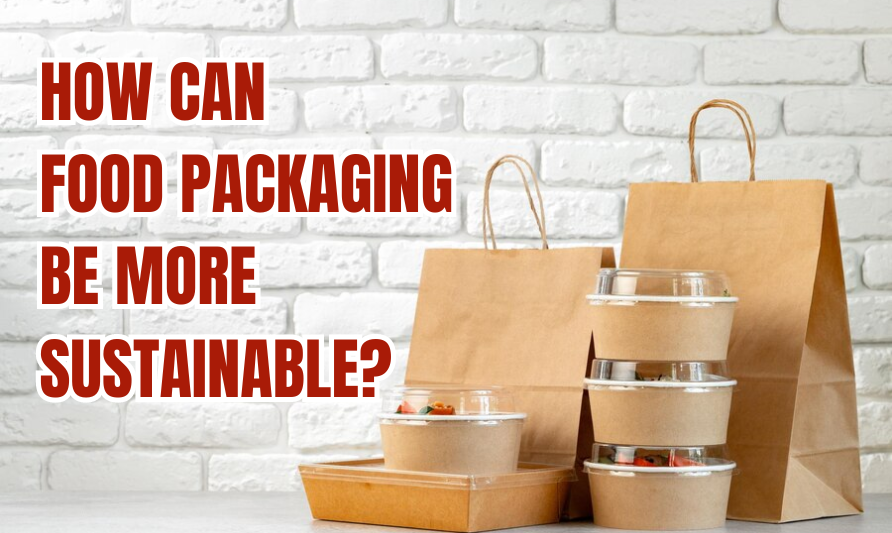Many customers have recently become ecologically aware. They seek organic products and offer environment-friendly food packaging. The use of sustainable food packaging would no longer be an option, given the corporate requests, increased consumer desires, and future policies by the government.
The compulsory food packaging that is environmentally sustainable will be implemented in every country soon.
Food production needs to increase by at least 70% to meet the nutritional needs of the global population to reach 9.1 billion by 2050.
However, the natural resources needed for this are limited and are under growing pressure.
Food packaging companies UK addressing the problem by identifying new ways to minimize the environmental effects of food production and support the global ability to continue food production to the greatest extent possible for the future.
Once all packaging products are streamlined with safe and recyclable packaging methods, they allow companies to reduce their environmental impact and improve customer loyalty. Here are some good examples of sustainable and creative food packaging.
Examples of Sustainable Food Packaging
- Use Environment-Friendly Packaging
- Food Waste Reduction
- Improve the Quality of Energy and Water
- Use Sustainable Ingredients
- Conceptual Tea Blends
- Smart Paper Cups
Let’s Discuss Each Point in Detail
1. Use Environment-Friendly Packaging
A significant cause of waste and contamination is food packaging. Every year there are more than 78 million metric tons, of which only 14 percent is recycled. The vast majority of plastics are manufactured from non-renewable sources – oil which gas – and will eventually become a landfill.
Increasing numbers have chosen alternatives based on wood and paper. Wood and paper are biodegradable, organic, and easy to recycle. However, the paper and wood used to produce the packaging come from sustainable forests. Other manufacturers produce innovative alternative packaging of biodegradable products, like plants, crops, and fish skin. This includes any of these new options that are capable of replacing single-use plastics foil lined paper bags.
Sustainable aluminium products are one of the most environmentally sound options when it comes to metal food packaging.
The recycling process takes just 5% of the energy needed to finish fresh aluminium. Aluminium foil container is one of the most quickly and commonly recyclable metals.
2. Food Waste Reduction
Almost a third of food produced for human consumption is wasted every year, according to the Food and Agriculture Organization of the United Nations. This represents 1.3 billion tons per year of food waste. This not only represents a significant loss of food but also of the means for it (i.e. water, soil nutrients, transportation energy, labour). While approximately one-third of this food is wasted during agriculture and post-harvest treatment, and users waste another fifth, nearly half of all food waste comes from processing and production.
Inefficient processing and packaging are one of the major sources of food waste. By improving their processes and management systems, food producers and processors will dramatically reduce food waste. This begins with a thorough measurement and identification of food losses. It also requires adequate training of the staff.
3. Improve the Quality of Energy and Water
Both energy and water are intensive for food processing and manufacturing. The food industry is responsible for about 23% of the total energy expenditure in the United States in processing and manufacturing. Water is widely used as an ingredient and in different industrial processes in processing food (e.g. cleaning, sanitizing, cooling, and cooking).
The reduction of energy and water use can be especially challenging in the food processing and manufacturing sector.
Nevertheless, major changes can also be made with further productivity opportunities. The use of digital meters, energy-efficient implementation, and sustainable water management systems will help to recognize these opportunities and take action on them.
4. Use Sustainable Ingredients
In particular, there is a range of agricultural products whose development raises concern about environmental and social sustainability.
For example, the cultivation of 'dirty' palm oil, cocoa, and coffee has been linked to deforestation, habitat destruction, child and forced labor, etc.
Another area of concern is fish products: approximately 90% of fishing worldwide is completely used, overpopulated, or depleted. Overfishing and destructive fishing techniques are threatening fish populations around the world, damaging vulnerable marine environments and ecosystems, and jeopardizing their livelihoods.
5. Conceptual Tea Blends
From Rhoeco, a mixture of dry fruits and herbs in 5 separate themes is the conceptual tea combination series.
The Conceptual Tea Blends come in plain but elegant and durable food packages, which seem like the pot for the plant.
Seeds are fastened on the inside of the lids and you can use the grains to plant in the same pot once the tea is done.
6. Smart Paper Cups
Due to a large number of single-use coffee cups heading to the waste disposal, the packaging manufacturer Huhtamaki developed the Future Smart paper cup. Future Cups have been made for 100% organic drinks. The Future Cups include plant-based materials and can be used for both warm and cold products, regardless of whether ice cream, coffee, or some other food product.

